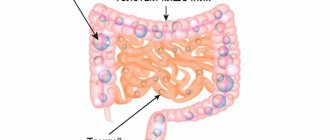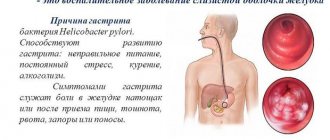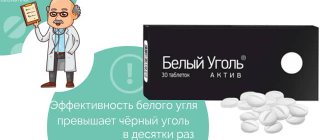The appendix is a vermiform appendix of the cecum. The inflammatory process in it is accompanied by numerous symptoms. A characteristic feature of these signs is the significant differences in their manifestation in people of different age categories, men and women, and pregnant women.
In addition, there are individual features of the localization of the organ, which is why many people have a question about which side appendicitis can manifest itself from. After all, everyone’s feelings can be in different places.
To understand where the appendix is located in a person and what causes its inflammation, it is advisable to familiarize yourself with information about this organ.
On which side is the human appendix located?
The appendix is located in the projection of the right iliac region and is a continuation of the cecum. The cecum is approximately 8 cm in length and 7 cm in width, and the vermiform appendix itself is no more than 1 cm in width, and is equal in length to the cecum, that is, about 7-8 cm. The vermiform appendix can have its own location in each person , and its exact topography is of utmost importance for the surgeon at the time of surgery to select the most convenient access to the organ. According to statistics, every year about 300 thousand operations to remove the appendix are carried out incorrectly due to an initially incorrect diagnosis.
Blind but dangerous
The appendix is a short and thin blind vermiform appendix 7-10 cm long, located at the end of the cecum (the initial part of the large intestine). Like any part of the intestine, the appendix produces intestinal juice, but so little that it does not play a special role in digestion. Therefore, for a long time it was considered a “mistake of nature” and was removed by the patient at the first opportunity. But recently, scientists discovered lymphoid cells in the caecum, the same as in human tonsils. And since these cells have the properties to protect the body from infections, the assumption was born that the appendix is part of the immune system.
However, the number of protective cells in it, as it turned out, is very insignificant and cannot have a strong effect on the immune system. So most experts are still confident that there is no benefit from the appendix, but the harm in case of its inflammation can be significant: acute appendicitis not diagnosed in time can cost not only health, but also life.
The role of the appendix in the body
For a long time, the appendix was considered an “extra organ” in the human body, the removal of which did not in any way affect the functioning of internal organs and systems. This could be confirmed by the fact that after appendectomy, the operated people did not complain of any deterioration in their health.
After numerous studies, including immunological and histological, it was found that the appendix is extremely important and there is not a single superfluous organ in the human body. The appendix is directly involved in such important processes:
- affects the functioning of the immune system and increases the body’s resistance to infections - there is a lot of lymphoid tissue in the walls of the appendix;
- improves intestinal motility due to the production of certain hormones;
- takes part in the synthesis of amylase, a digestive enzyme that breaks down food starch.
If the appendix is so important, then why do people who have it removed have no deterioration in their health? The absence of disturbances in the functioning of internal organs and systems is explained by the inclusion of compensatory reactions, that is, the functions of the removed appendix are “taken over” by other organs. Despite the fact that the constancy of the internal environment after the operation is maintained at the proper level, the absence of the appendix reduces the so-called safety margins of the immune system.
Prevention measures
For about a month after the operation, it is not allowed to take baths or go to the sauna - temperature stress interferes with the healing of the wound - it negatively affects the suture, it takes on a wide and rough outline. In the postoperative period, to avoid complications and speed up recovery, you should get plenty of rest.
People suffering from certain ailments may not pay much attention to the symptoms of the disease, since appendicitis manifests itself precisely in the place on which side it constantly hurts. Therefore, a masked disease is much more dangerous for those people who:
- Oncological diseases or a course of chemotherapy.
- Diabetes.
- Obesity.
- There was an organ transplant.
- Pregnancy, especially in the 3rd trimester.
Appendicitis is also dangerous for young children and the elderly.
Reasons for development
Inflammation of the appendix is always provoked by pathogenic bacteria - staphylococci, streptococci, E. coli, anaerobic bacteria, which enter the mucous membrane of the appendix and begin to actively multiply there. However, to activate pathogenic flora and develop the inflammatory process, concomitant factors are necessary, which can be local, general or social:
Local factors:
- narrowing or complete blockage of the mouth of the appendix with undigested food, stones, balls of worms, tumors, polyps or other neoplasms, as a result of which proper blood circulation in the cecum is disrupted and stagnant processes develop in the appendix;
- thrombosis of the vessels of the appendix, which leads to stagnation and necrotic changes in tissue;
- spasm or stretching of the walls of the appendix, resulting in increased peristalsis and mucus formation at the reflex level.
General factors:
- violation of the diet, predominance of exclusively carbohydrate or protein foods in the diet;
- chronic inflammatory and infectious processes in the stomach, pancreas, gall bladder, intestines;
- allergic reactions and disorders of the immune system.
Social and household:
- living in an unfavorable ecological environment with low social conditions - the inability to wash hands thoroughly and maintain cleanliness in general, a high risk of infection with worms;
- chronic nervous stress.
The combination of 3 risk factors at once leads to the rapid and active proliferation of pathogenic microorganisms in the appendix, resulting in the development of purulent appendicitis.
How does appendicitis hurt?
The very first and earliest sign of inflammation of the appendix is pain. Painful sensations arise spontaneously, without preliminary other signs of any disease and are first localized in the navel area, and several hours later (up to 1-2 days) after the inflammatory process has progressed, they move to the area of the right iliac zone.
The nature of the pain in appendicitis is not sharp and excessively intense, but disturbing, constant, intensified by coughing, entering, changing body position. In order to relieve discomfort, the patient often lies on his back with his knees bent.
Postoperative pain
Appendicitis can present differently in everyone, depending largely on age, gender and the location of the appendix.
For most, it is located on the right side, between the ilium and the navel - the most painful sensations appear in this place. Sometimes the appendage is located near the right hypochondrium or in the lower part of the pelvis. There are cases when the appendix is localized on the left, but they are extremely rare and concern people born with a mirror arrangement of organs. A slight dull pain first appears in or near the navel, does not have an exact location and is constant. Painful sensations of this kind last from 6 to 12 hours, after which the pain syndrome moves to the immediate location of the appendix. In some cases, the appendage may hurt at the level of the hypochondrium, in the groin area, or radiate to the leg - it all depends on the individual location of the organ. Then nausea, vomiting may begin, and a slight temperature rise (up to 38).
Another sign of appendicitis is a wet tongue with a white coating. When coughing or sneezing, the pain intensifies many times, and when changing body position, it subsides. People often confuse inflammation of the appendix with another disease, especially if the patient has problems with the kidneys, liver, or in men, with the bladder.
In most cases, the appendix is localized between the right ilium and the navel, in the middle, and this is where the most severe painful sensation occurs. However, depending on the physiology, the appendix may be elevated to the right hypochondrium or lowered to the lower part of the pelvis. In the first case, the pain syndrome will occur closer to the liver; in the second case, the manifestation of the disease in men can be confused with inflammation of the bladder, and in women - with inflammation of the appendages.
When the appendix is located behind the cecum, wrapped towards the ureter and kidney, the pain manifests itself in the groin, pelvic area and radiates to the leg, therefore, when the doctor asks where it hurts, appendicitis can be detected almost immediately, which means treatment will not take place long wait. Painful sensations during illness occur suddenly, and their intensity increases with each passing hour. In an acute attack of appendicitis, sharp and unbearable pain occurs, similar to colic.
The patient's pain syndrome will continue until the nerve endings die, when this happens, the pain will subside, however, this is not a reason to postpone a visit to the doctor, appendicitis will not just go away - the patient should be hospitalized immediately.
Removing the appendix is a fairly common procedure and, in most cases, occurs without complications. However, if your appendix hurts after surgery, this may indicate possible complications.
- A slight divergence of the internal seams as a result of overexertion can cause cutting pain.
- Adhesive processes, which can subsequently affect the functioning of other organs, create nagging pain.
- Too sharp pain may indicate that the intestines are being compressed, which means medical intervention is required.
- Unpleasant sensations and pain after removal of the appendix may occur due to poor nutrition.
In the postoperative period, it is very important to follow all the doctor’s recommendations regarding lifestyle, suture care and the necessary diet, then you will have a better chance of not ending up on the operating table again. Be healthy!
Got a stomach ache? A person’s first suspicion is a dysfunction of the stomach, pancreas, and intestines.
And only some people, when abdominal pain appears, immediately think about inflammation of the appendix. This can always be a correct assumption, especially if a person knows which side of appendicitis gives pain.
Therefore, there is no need to give the sick person any medicine, but to immediately call an ambulance.
What is the condition when appendicitis hurts with varying severity, from mild attacks to severe pain, and where appendicitis hurts, everyone who has this intestinal appendix is still alive and well in the body should know.
Such knowledge helps the patient accurately describe his sensations, by which the doctor can accurately diagnose the disease.
This is important because pain occurs due to indigestion, due to the development of infection in the intestines. This gives similar symptoms that must be correctly differentiated.
On which side is appendicitis located in a person's stomach? The intestinal process is located in the lower abdomen, closer to its right region.
Its location is in the ileum, in the small pelvis. The anatomy shows several options for the localization of the intestinal appendix, and each of them is correct and natural.
It’s just that each person is individual in his structure. Non-standard location - behind the cecum, almost close to the liver, is quite common.
Knowing the anatomical location and in which side the appendicitis is located, doctors can easily determine the source of pain.
Inflammation of the appendix is a common pathology, but not everyone is familiar with its symptoms. In medical practice, pathology most often occurs with an acute course, when immediate surgical treatment is required.
To do this, doctors need to promptly recognize appendicitis and clarify the nature of the pain.
The appendix manifests itself in acute and chronic inflammation. This determines where appendicitis hurts and whether urgent surgery is required to remove the inflamed intestinal appendix.
The acute form is characterized by severe, piercing pain, complete loss of appetite and sensitivity of taste buds, in which a person simply does not feel taste.
Appendicitis at home develops rapidly. Only specialists know how to recognize the disease and not confuse the symptoms with the manifestation of gastrointestinal pathology.
The pain may be intermittent, or, conversely, last indefinitely with varying severity. Therefore, it is important to immediately call an ambulance, and in the examination room of the emergency department, specialists decide whether the operation is necessary.
Inflammation of the appendix develops as a result of many factors:
- gastrointestinal diseases;
- infection in the digestive system;
- blockage of the appendix with undigested food, seed husks, and hard feces;
- increased mobility of the intestinal appendix, which often occurs in childhood.
And at the same time, there is no clear answer to the question of why appendicitis occurs.
The time just comes for it to become inflamed for some internal, genetic reasons, and inflammation takes different forms in different people.
This may depend on the general state of the immune system, frequent colds, and chronic gastrointestinal diseases.
Predisposing factors are disturbances of the microflora in the intestines, frequent overeating, and consumption of predominantly protein foods.
Among the provoking factors, doctors name a sedentary, sedentary lifestyle.
Which side a person has appendicitis on is determined by anatomy. At the same time, what causes its inflammation is determined by the individuality of the patient, the characteristics of his body, the tendency to purulent infection or, conversely, to tissue destructuring.
Forms and types of appendicitis
According to the form of the inflammatory process in the appendix, acute and chronic appendicitis are distinguished. The acute form develops rapidly with vivid clinical symptoms and has several types:
- catarrhal - characterized by stagnation of blood circulation at the apex of the appendix. This is easily diagnosed in the first hours and is instrumentally indicated by lymphatic effusion, swelling of the appendix and an increase in the mucous membrane in volume. If the inflammatory process is diagnosed at this stage, then the patient can do without surgical intervention. After a few hours (maximum 24 hours), the catarrhal form progresses to phlegmonous
- Phlegmonous appendicitis is characterized by pronounced thickening of the walls of the appendix, coating of the mucous membrane in the area of the mouth of the appendix with purulent contents, and the formation of multiple abscesses.
- The gangrenous form is characterized by the development of destructive changes in the walls of the appendix and the involvement of surrounding tissues and mesenteries in the pathological process.
Complications
Complications of acute appendicitis may be associated with pathologies associated with the non-removed appendix and unsuccessful surgical intervention.
They are divided into early and late. Early complications arise during surgery or in the first 2-3 days after it. Late ones appear on about 4-5 days, sometimes on the 7th day. Common early complications include:
- bleeding – develops due to unsuccessful ligation of blood vessels or bleeding of a small vein;
- intestinal paresis - develops as a result of improper application of the intestinal suture and a sharp decrease in peristalsis due to adhesions. Clinically, paresis is manifested by vomiting a couple of hours after eating and absence of bowel movements;
- acute ischuria (urinary retention) - develops against the background of swelling of the abdominal tissue and reflex spasm of the bladder sphincter.
Late postoperative complications of appendicitis include:
- inflammation of the peritoneal tissue - peritonitis, due to infection of the postoperative wound and infection in the abdominal cavity. Clinically manifested by severe pain and tension in the anterior abdominal wall, vomiting of undigested food or bile, increasing weakness and tachycardia;
- Wetting of the sutures of a postoperative wound - this complication is possible due to individual intolerance to the suture material or insufficient thorough treatment of the suture site. Clinically, the complication is accompanied by fever, abdominal pain, nausea and vomiting.
Complications associated with failure to remove the inflamed appendix most often develop in people who are in no hurry to seek medical help or self-medicate. Complications can also be caused by incorrect diagnosis of appendicitis, since the inflammatory process of the appendix has similar symptoms to other pathologies of the abdominal organs.
How to distinguish appendicitis from other diseases?
Diagnosis of appendicitis includes a complex of instrumental, physical and laboratory studies, namely:
- careful collection of anamnesis - the doctor finds out the nature and duration of pain, intensification when turning to one side or changing body position, the presence of associated symptoms (nausea, diarrhea, vomiting);
- palpation of the anterior abdominal wall, percussion (tapping), measurement of body temperature and blood pressure;
- laboratory tests - urine and blood tests;
- Ultrasound of the pelvic and abdominal organs;
- abdominal x-ray;
- conducting diagnostic tests, the results of which are key in differentiating appendicitis from other diseases.
The most frequently used diagnostic tests in modern surgery are:
- according to Obraztsov’s method, the patient is placed in a supine position, while the right leg must be raised straight up. With appendicitis, pain in the lower back will increase due to muscle tension.
- According to Bartomier-Mikhelson, the patient lies on his left side, and palpation of the right iliac is accompanied by severe pain.
- According to Shchetkin-Blumberg - with the fingers of both hands, the doctor presses strongly on the area of the right iliac and sharply releases his hands. With appendicitis, the patient will feel a sharp pain after releasing the fingers.
Treatment
All patients who have signs of an “acute” abdomen are hospitalized in the surgical department, where appendicitis is differentiated from other diseases. Inflammation of the appendix is confirmed by vaginal or rectal examination, after which a final decision on the method of therapy is made.
With severe clinical symptoms of acute appendicitis and increasing progression of the condition, the patient is advised to undergo surgery within the first few hours of admission to the hospital. If the clinical picture is moderate and there is no risk of appendix perforation, conservative therapy is indicated:
- desensitizing therapy;
- antispasmodics;
- antibiotics.
After the acute inflammatory process has resolved, if necessary, the patient undergoes surgical removal of the appendix.
If appendicitis is complicated by involvement of the peritoneal and mesenteric tissues in the inflammatory process or perforation of the wall of the appendix, then laparotomic surgery is necessary and performed as soon as possible - the appendix is removed through a cavity incision in the anterior abdominal wall. In the absence of perforation and signs of peritonitis, the operation can be performed laparoscopically.
When to call a doctor
The occurrence of the symptoms described above, which did not stop after 5-6 hours, despite taking painkillers, is a signal to urgently call an ambulance. This is the only way to avoid the likelihood of complications caused by acute appendicitis.
What not to do before doctors arrive
In order not to harm yourself and not to distort the clinical picture, if alarming and not always clear symptoms occur, you should not:
- Take analgesic or laxative medications.
- Take antibiotics.
- Use various decoctions and infusions.
- Try to relieve pain with a compress or heating pad.
In addition to making diagnosis difficult, such actions are fraught with acceleration of the inflammatory process.
To prevent the health and life-threatening consequences of acute appendicitis, measures such as an immediate visit to the doctor, a thorough diagnostic examination, and timely and high-quality surgery are needed. The forecasts in this case are only positive.
Problems with the appendix are far from uncommon; the inflammatory process on the surface of this appendix can be treated in only one way, surgery. Delay in treatment can have life-threatening consequences, so it is important to recognize the symptoms of this disease promptly and go to the hospital immediately. How to notice the signs of the disease, in which side of the appendicitis, on the right or left side, and are there any differences between the symptoms in children and adults?
Emergency care for acute appendicitis
If symptoms of acute appendicitis appear, it is necessary to urgently call an ambulance, lay the patient on his back, calm him down, and to reduce pain, it is allowed to apply a heating pad with ice water wrapped in several layers of fabric to the right iliac. It is strictly prohibited until the ambulance arrives:
- relieve pain with analgesics;
- apply a hot heating pad or compress to your stomach;
- take antispasmodics or laxatives;
- introduce any liquids into the rectum using an enema.
Even if the abdominal pain has decreased or gone away over time, you should still see a doctor to rule out or confirm appendicitis - complications most often develop against the background of a late diagnosis.
Differential diagnosis
For diagnosis, visual inspection and palpation are used primarily. The main symptoms are a tense abdomen and pain in the lower right part. However, these methods are not always reliable. Diagnostic methods such as ultrasound, MRI and computed tomography, blood and urine tests are also used.
It should be noted that recognizing the disease can be difficult, since the symptoms of acute appendicitis are largely similar to other diseases of the gastrointestinal tract. These include acute gastroenteritis, pancreatitis, ulcer (especially if it is perforated), intestinal or renal colic, inflammatory processes of the uterus, stretching or rupture of the abdominal muscles. Therefore, it is important to differentiate appendicitis from other diseases, which in most cases do not require urgent surgical intervention.
Blood tests, ultrasound, and abdominal x-rays help confirm the diagnosis. If the institution has a CT scan, a computer study is performed.
Many diagnostic methods are required to accurately establish the form of the disease, since sometimes the symptoms of appendicitis are erased by the duration of the disease or the presence of complications in the peritoneum.
Doctors know for sure what appendicitis is. They know how insidious this disease is.
An erroneous diagnosis, especially if you visit a doctor late, may lead to the development of complications:
- perforation of the appendix, when infectious agents enter the abdominal cavity, causing peritonitis;
- intestinal obstruction, which develops due to inflammation, which impairs the functionality of the intestinal muscles;
- sepsis, if the infection enters the blood; This is a dangerous condition that poses a serious threat to human life.
How to check for appendicitis, determining by signs and symptoms in women, at home, even before the ambulance arrives?
To do this, you need to know the anatomical location of the intestinal appendix in men and women. The typical location is on the right side, slightly below the navel. However, there is also an atypical arrangement.
Therefore, it is important to conduct an ultrasound or CT scan so as not to confuse which symptoms are due to appendicitis and which are due to gastrointestinal diseases.
The location of the appendix depends on its length and the condition of the mesentery, with which it is attached to the walls of the intestines.
The appendix is anatomically not large, but its mechanical blockage leads to inflammation of the entire intestine in the attachment part of the appendix.
Therefore, a differential diagnosis is needed to rule out chronic constipation, disease of the blood vessels supplying the appendix and lower intestines, and infection.
It is worth noting that it is strictly forbidden to give painkillers to a sick person.
Analgesics erase pain, and a person simply will not feel the moment the appendix ruptures, and this usually causes death.











